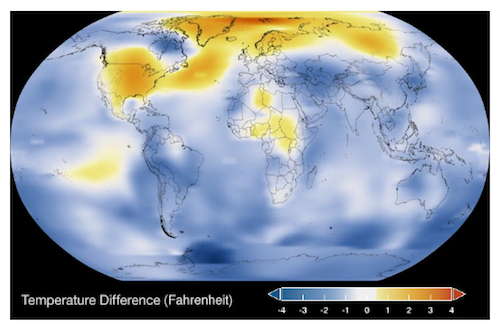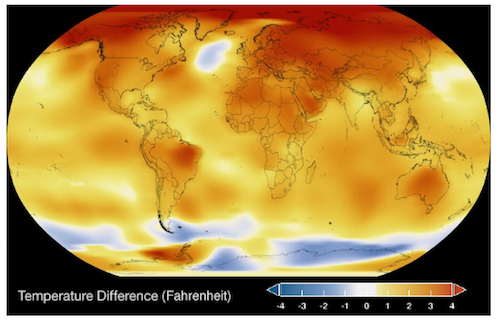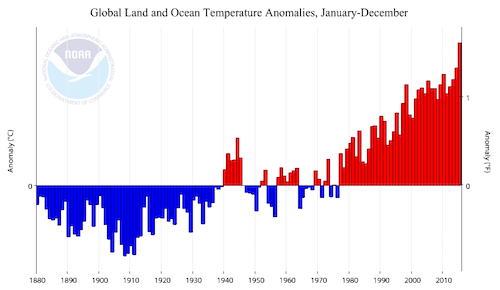 Arguments
Arguments
 Software
Software
 Resources
Comments
Resources
Comments
 The Consensus Project
The Consensus Project
 Translations
Translations
 About
Support
About
Support


Latest Posts
- Skeptical Science New Research for Week #14 2025
- Two-part webinar about the scientific consensus on human-caused global warming
- Sabin 33 #22 - How does waste from wind turbines compare to waste from fossil fuel use?
- Clean energy generates major economic benefits, especially in red states
- 2025 SkS Weekly Climate Change & Global Warming News Roundup #13
- Skeptical Science New Research for Week #13 2025
- Climate skeptics have new favorite graph; it shows the opposite of what they claim
- Sabin 33 #21 - How does production of wind turbine components compare with burning fossil fuels?
- China will need 10,000GW of wind and solar by 2060
- 2025 SkS Weekly Climate Change & Global Warming News Roundup #12
- Skeptical Science New Research for Week #12 2025
- Climate Fresk - a neat way to make the complexity of climate change less puzzling
- Sabin 33 #20 - Is offshore wind development harmful to whales and other marine life?
- Do Americans really want urban sprawl?
- 2025 SkS Weekly Climate Change & Global Warming News Roundup #11
- Fact brief - Is waste heat from industrial activity the reason the planet is warming?
- Skeptical Science New Research for Week #11 2025
- Visualizing daily global temperatures
- Sabin 33 #19 - Are wind turbines a major threat to wildlife?
- The National Hurricane Center set an all-time record for forecast accuracy in 2024
- 2025 SkS Weekly Climate Change & Global Warming News Roundup #10
- Fact brief - Is Greenland losing land ice?
- The Cranky Uncle game can now be played in 16 languages!
- Skeptical Science New Research for Week #10 2025
- Climate Adam: Protecting our Planet from President Trump
- Sabin 33 #18 - Can shadow flicker from wind turbines trigger seizures in people with epilepsy?
- Cuts to U.S. weather and climate research could put public safety at risk
- 2025 SkS Weekly Climate Change & Global Warming News Roundup #09
- Fact brief - Are high CO2 levels harmless because they also occurred in the past?
- Skeptical Science New Research for Week #9 2025
Archived Rebuttal
This is the archived Basic rebuttal to the climate myth "1934 - hottest year on record". Click here to view the latest rebuttal.
What the science says...
|
Globally the year 1934 was cooler than the 20th century average. |
The year 1934 was a very hot year in the United States, ranking sixth behind 2012, 2016, 2015, 2006, and 1998. However, global warming takes into account temperatures over the entire planet, including the oceans. The land area of the U.S. accounts for only 2% of Earth's total surface area. Despite the U.S. sweltering in 1934, that year was not especially hot over the rest of the planet, as you can see on the 1934 map below. Globally, 1934 temperatures were actually cooler than average for the 20th century.
1934
2016
Figure 1. Global temperature maps for 1934 (top) and 2016 (bottom). Source NASA.
Climate change skeptics have pointed to 1934 in the U.S. as proof that recent hot years are not unusual. Choosing the year 1934 is an obvious example of "cherry-picking" a single fact that supports a claim, while ignoring the rest of the data. In fact they have to cherry pick both a location (the U.S.) and a year (1934) to find data that is far from the global trend. Globally, the years 2014, 2015 and 2016 are the hottest on record, so far.

Figure 2. Global land and ocean temperatures from 1880 to 2015. Source: National Climate Data Center
The fact that there were hot years in some parts of the world in the past is not an argument against global climate change. Regional and year-to-year temperature variations will always occur. The reason we are worried about climate change is that on average, over the entire world, the long term trend shows an undeniable increase in global surface temperatures and global ocean temperatures. This rapid global heating is dramatically altering the planet we live on.
Updated on 2017-08-07 by Sarah.
THE ESCALATOR

(free to republish)
























































